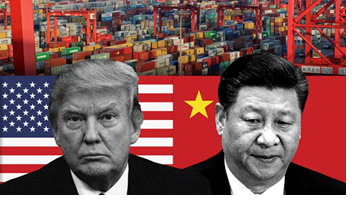China has all the cards in its pocket, and Trump is caught in a trap created by himself. The U.S. would maintain 55% tariffs on Chinese goods, while China would keep a 10% tariff on U.S. goods.
The terms have been refused.
U.S.-China trade talks in June
2025 followed a period of heightened tensions, with tariffs escalating to
triple-digit levels (e.g., 145% on Chinese goods, later reduced to 55%, and 10%
on U.S. goods entering China). A preliminary agreement was reached in Geneva in
May 2025 to pause further tariff escalation for 90 days, followed by marathon
talks in London in early June 2025 to establish a “framework” to ease trade
tensions.
China’s De-Americanisation
Strategy: “Delete America”
China agreed to supply rare earth minerals and magnets, critical for U.S. industries like electric vehicles and defence, in exchange for the U.S. allowing Chinese students to continue studying at American universities. This is not accepted by Mr.Xi. Chinese businessmen are becoming independent in their trade in terms of less dependency on the U.S. Chinese companies say they are replacing overseas suppliers with China-based ones to “localise” their supply chains and push out imports—a trend given extra impetus by the trade conflict with the U.S. Chinese business men are now using the word -Delete America. This is a massive and major change that will be reflected in the coming days in business and trade. Supply chain changes will be huge, which will create long-term issues for the U.S only.
China is reallocating away from
U.S. debt toward other assets to diversify its holdings. China began unloading Treasuries
opportunistically over the past 12 months, culminating in the $170 billion drop. The reduction speed picked up during periods
when the U.S. Treasury auctions were oversubscribed, making it easier for China
to offload without disrupting the market. China’s total U.S. Treasury holdings
dropped from over $1 trillion to just below $800 billion, making it no longer
the second-largest foreign holder of U.S. debt—Japan has taken the lead. This
is the most significant drawdown of U.S. Treasury holdings by China since
2010–2011, signalling a fundamental shift in strategy, not a temporary
adjustment.
Conclusion
Now, as Mr. Xi refuses to sign
the agreement, we will witness more negotiation and broader trade issues in the
coming days. China’s cautious statements and Xi’s strategic approach suggest he
may be withholding approval pending better terms, leveraging China’s rare earth
dominance. But the Chinese leadership has no interest in filling America’s
shoes. Attempting to do so could cost China dearly just when it is undertaking
a broader economic reorientation at home.




















